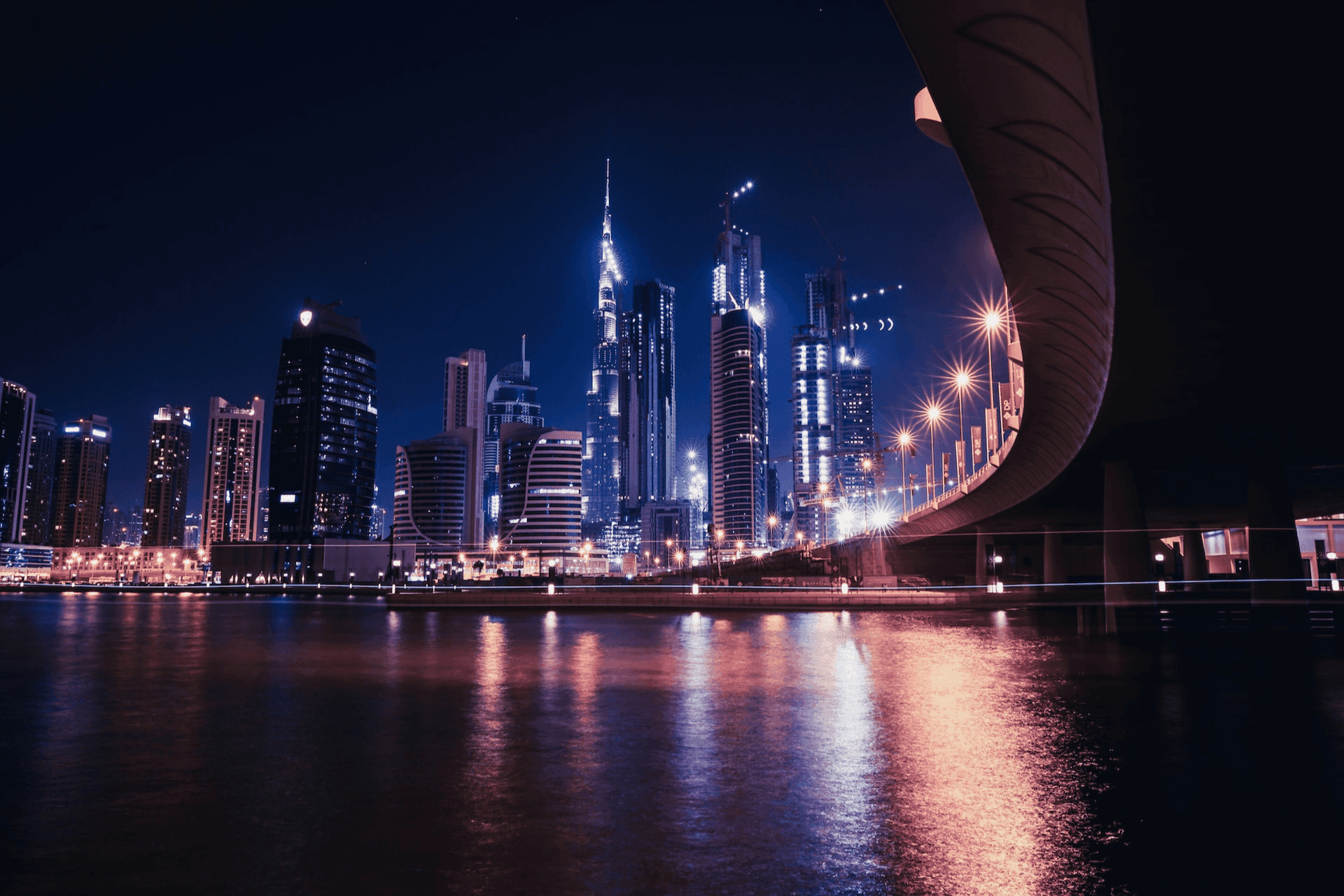This vast modern metropolis is a hub of commerce and a dream destination for those seeking luxury. But not only that – it can also pleasantly surprise travellers who want to experience the authentic culture of the Arabian Peninsula. Tall skyscrapers look down on original settlements on the shores of the Persian Gulf, people from all over the world stroll the bustling streets, and exotic markets tempt and scent the centre.
Weather and transport
Definitely don't go to Dubai in the summer. Temperatures can reach 50 °C (122 °F) and humidity is extremely high. This is why all indoor areas are air-conditioned, and even the walkways from the metro to the malls are air-conditioned tunnels. On the other hand, in the winter there are occasional heavy rains. You can get a taste of Dubai on a short stopover, but we'd definitely recommend allowing at least a week to see the city and its surroundings. As well as exploring all parts of the city, you can also swim in the sea, hike in the mountains and explore the desert dunes.
Getting to know Dubai is surprisingly easy. Throughout Dubai runs the main Sheikh Zayed Road, which is actually a twelve-lane highway that carries most of the city's car traffic. It is, of course, completely closed to pedestrians and the only places to cross it are the covered overpasses at the elevated metro stations. In places where you cannot walk, you can get a relatively cheap taxi ride. The ride on the automated metro is like a roller coaster ride, and the first and last cars provide the best experience. However, this is only for first class or women with children. In addition, there are also classic trams in the Dubai Marina district. Or try the so-called monorail – this will take you to the top of the artificial palm tree shaped island, and to the luxury hotels. The cheap regular boat service on the Dubai Canal is also worth a try. The boat travels all around Downtown and offers amazing views. Slightly more expensive and longer is the route along the coast from Deira to Marina.

How a village became a megalopolis
Dubai's ruler, Sheikh Muhammad bin Rashid Al Maktoum, understood well that oil, of which the Emirate of Dubai has little compared to other emirates, will not guarantee wealth forever, and cannot be built upon for the future. So he decided to build something wonderful that people from all over the world would come to see. All of Dubai's "best" are therefore not just innovative and fancy, but are attractions that ensure the emirate's survival on a sustainable basis.
The indigenous people of the desert region make up only about 15% of the population of the city of three million, which is nearly fifty kilometres in length. The city attracts a wide variety of workers, from professionals and architects to guest workers from Pakistan, India and the Philippines. Although they earn the minimum wage and living conditions are not great, they are still better than in their home countries. And they still manage to send money back home from the little they earn.
The face of the city is incredibly multicultural thanks to all of them. The values are the same for everyone here: money is the supreme religion. Thus, veiled women meet girls with mini skirts every day and nobody cares. The common goal is earnings. And it works.
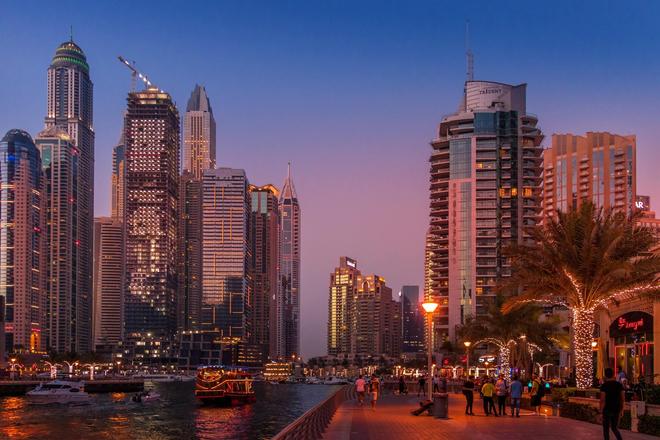
The world before oil
Before 1975, the tallest building in the city was the tower of the Al Fahidi fortress, which is only about 20 metres tall. It is the oldest building in the city. Inside the fortress is the Dubai Museum, and both the fort itself and its exhibitions are definitely worth a visit. A particular highlight awaits you underground, where you can admire life-size models depicting the life of the original inhabitants, with markets, mosques, pearl hunting and palm farming.
Just behind the fortress begins the Al Bastakiya district, which looks ancient. Its horizon is decorated with special towers, the so-called wind catchers. The wind blows through holes in the towers and is distributed throughout the building. This energy-free air conditioning can cool houses by up to 20 degrees. The towers and houses hidden behind high walls form narrow streets and labyrinths, inviting day and night walks. The neighbourhoods of Al Fahidi and Al Bastakiya lie to the south of the Dubai Canal, which was originally a natural bay, but has been artificially extended to encircle the whole of downtown Dubai.
TIP: Visit Al Bastakiya at night. The lighting of the historic buildings is mesmerising.
Along the Dubai Canal
To the north of the canal lies the Deira district, an old city that looks and functions much like anywhere else in the Arab world. No skyscrapers, but narrow streets and stylish markets where haggling is common, and you can find shops selling crockery, clothing and all manner of mysterious junk. And this is where you'll find cheap accommodation and food. What you'd pay big bucks for among the skyscrapers costs just a fraction here.
You can also head to Deira for shopping. In the marketplace, you'll see black-clad ladies trudging behind their fully loaded porters. After shopping, you can reward yourself with food. Pakistani, Iranian and Filipino eateries offer huge portions for a very low price. Freshly imported ingredients guarantee that the taste will be exactly like that of the "home" countries. Deira is easily reached by metro, but you can also cross the canal on small traditional wooden abra boats, usually driven by guys from India or Pakistan. The journey costs one dirham and offers beautiful sights.
Along with Al Fahidi and Al Bastakiya, Deira forms one of the imagery centres of the city that you must see when you visit. These are also the only areas that breathe living history and where you'll get an authentic feel of the place before you head out into the hyper-modern world.
Burj Khalifa
Another city centre, this time super-modern, is around Burj Khalifa. The world's tallest skyscraper is a clear landmark. At almost 830 metres high, this building defies our senses at first glance and looks like a spacecraft that has just landed here. In fact, the best way to see the Burj Khalifa is from a few kilometres away, when it becomes clear just how much its mirror-shiny spire exceeds the surrounding 'normal' skyscrapers. If you want to go to the observation deck of the skyscraper, you must book your tickets in advance. They are usually unavailable on site, and significantly more expensive. It's just a pity that the viewing platform for tourists is at a height of "only" 452 meters. The view in the middle of the permanent construction site is not that breathtaking, but it is definitely still a must-visit. There is nowhere else like it in the world.
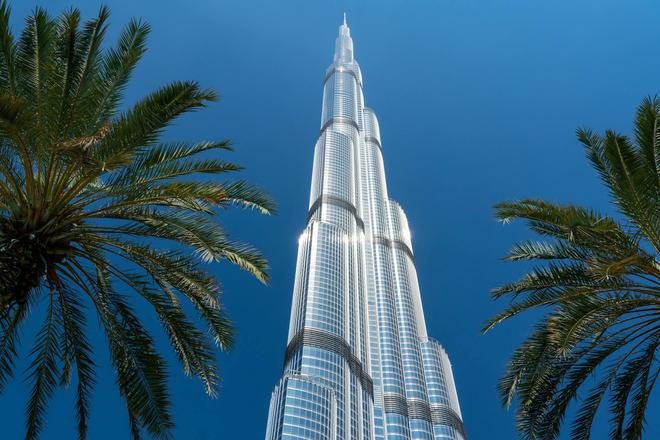
The entrance to the tower is located in the Dubai Mall, the largest shopping mall in the world. The mall itself is worth a visit. Besides the fact that Dubai Mall is an architectural masterpiece, you can also visit the famous aquarium. From the outside, you can watch the marine life for free through the giant glass, or you can pay to enter the tunnel and literally walk among the fish. Another "aquatic" attraction is the waterfall with its statues of jumpers.
Between the mall and the Burj Khalifa is a fountain, which is the largest "dancing" fountain in the world. Every half hour between 6pm and 11pm it plays and offers a spectacular show. The show is different every time, sometimes with a projection on the Burj Khalifa wall, which is the world's tallest projection screen thanks to its millions of LEDs. You can even take a boat ride in the fountain during the projection. The captain always knows exactly where the water will splash and which places to avoid.
Burj Al Arab
The legendary Burj Al Arab hotel, a sail-shaped skyscraper, has been moored since 1999 on its own artificial island off the coast, just to the south. To this day, it is undisputedly one of the most luxurious hotels in the world and arguably one of the most architecturally and stylistically spectacular. It is difficult to find an interesting place to photograph the Burj Al Arab from, as the beaches around it belong to other luxury hotels and anyone who is not a guest of such a hotel cannot get to the sea. The best photos are undoubtedly taken from the Madinat Jumeirah market, which is open to everyone and free of charge. Several canals lined with palm trees flow through the complex of buildings in traditional Arabic style, so an attractive foreground contrasting with the futuristic architecture of the "Sailing Ship" is achieved.
You can only get inside the Burj Al Arab if you stay here or at least make a reservation at one of the restaurants. The one on the top floor of the building is of course scenic, but perhaps even more interesting is the Al Mahara restaurant on the lowest floor. It's entered through a golden tunnel, and although it's not actually below sea level, it looks very true to form. In fact, it's the giant aquarium, which holds almost one million litres of water with so many schools of tropical fish, that makes for a spectacular impression!
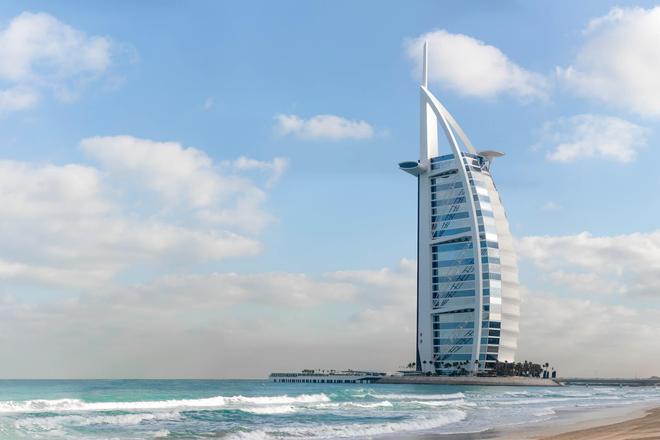
The mall as a cultural experience
Another mall, Mall of the Emirates, offers another curiosity: an indoor ski slope. Apparently, this attracts visitors from warmer regions in particular. They can rent ski equipment and go skiing while their children make a snowman under the "hill". For many, this can be a treat. During the day, the temperature is a constant minus one. A nice change and refreshing from the heat in Dubai.
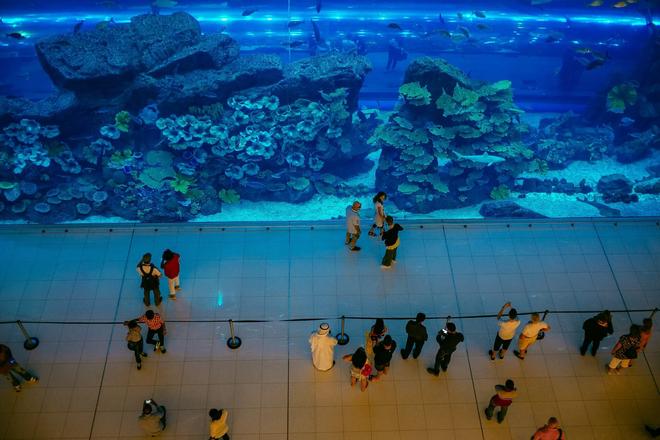
Ibn Battuta Mall is named after the greatest traveller in history, who was born in Morocco in 1304. It features stunning decor in the style of countries from Andalusia to China – cool craftsmanship, stucco, wood carvings and mosaics from all the countries the traveller visited. And then, under the Persian domes, Nike, Levis, Marks & Spencer and endless other global brands of our century.
Dubai Marina
The city of Dubai has several districts that stretch along the Persian Gulf and each district has its own centre. Dubai Marina is the southernmost of these and stretches along a man-made sea channel three kilometres long. Marina may mean harbour, but in reality it is a luxury residential and leisure district full of skyscrapers. The promenade along the canal is eight kilometres long and there are no cars. You can walk along the entire canal and enjoy the constant views of boats and yachts and incredibly shaped skyscrapers that are "only" about two or three hundred metres in height. And when you get tired of that, not only can you rest anywhere on a bench, but there are plenty of sightseeing restaurants with terraces shaded by palm trees. The Marina has such a laid-back, relaxed holiday spirit. This is where one of the city's public and free beaches, the famous Beach at JBR, is located. It offers showers, toilets and a clean environment. And just beyond the boardwalk, a restaurant with the coolness of palm trees.
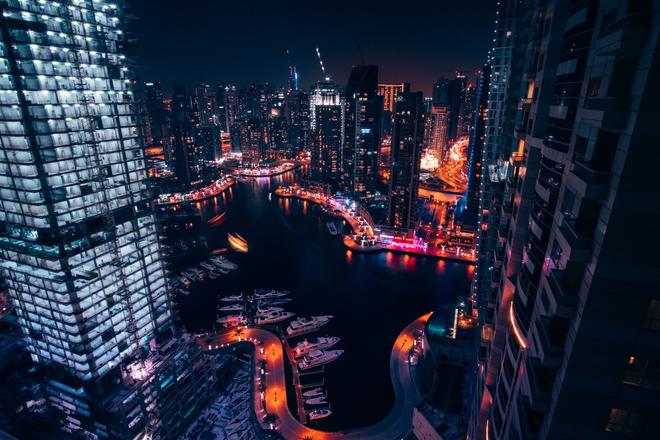
Not far from the Marina is another development project, which mainly includes man-made islands in the shape of palm trees. Why? Dubai has few natural beaches! So to attract tourists, it was necessary to create a rugged coastline and populate it with luxury, fabulous hotels. Building started with Palm Jumeirah in the waters of the Persian Gulf in 2001, and in just five years, the first residents were already moving onto the newly created land.
TIP: If you're in the city, it's hard to believe that all around Dubai is a sandy desert. But just get in your car and drive a few kilometres outside the city and the proof is in front of you. You can spend an evening or even a whole night in the dunes and you'll be pleasantly surprised at how refreshing an experience it is.
